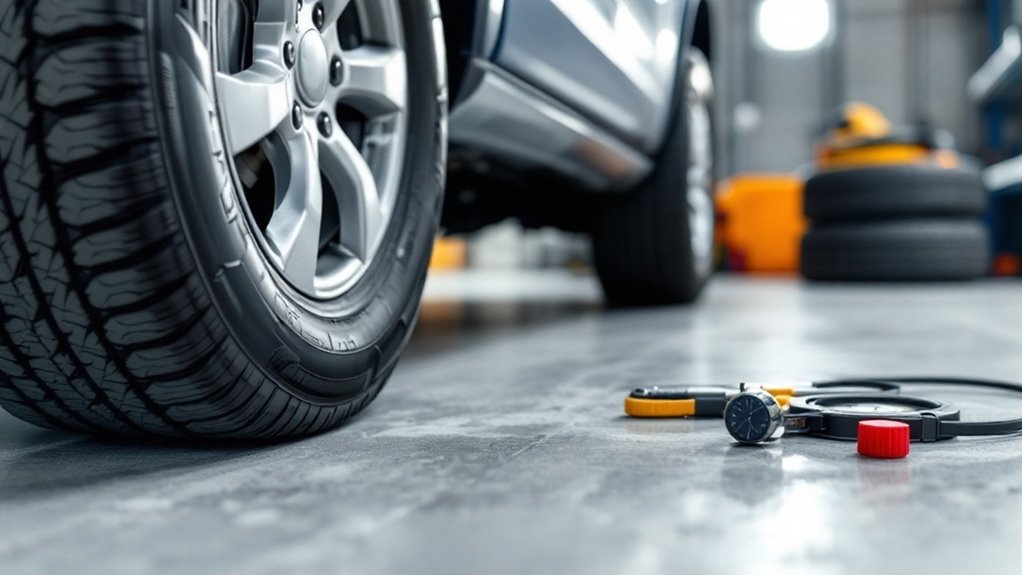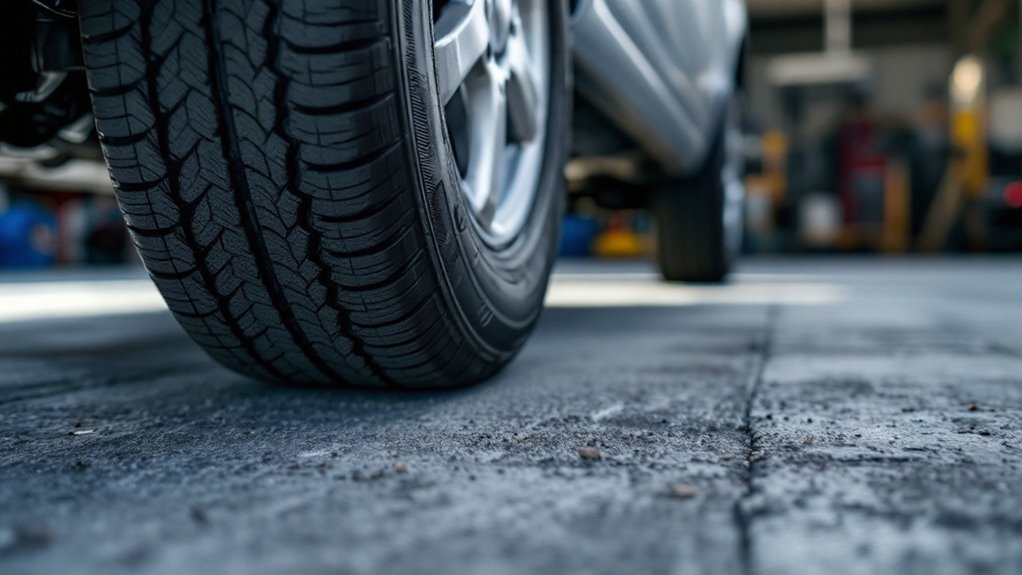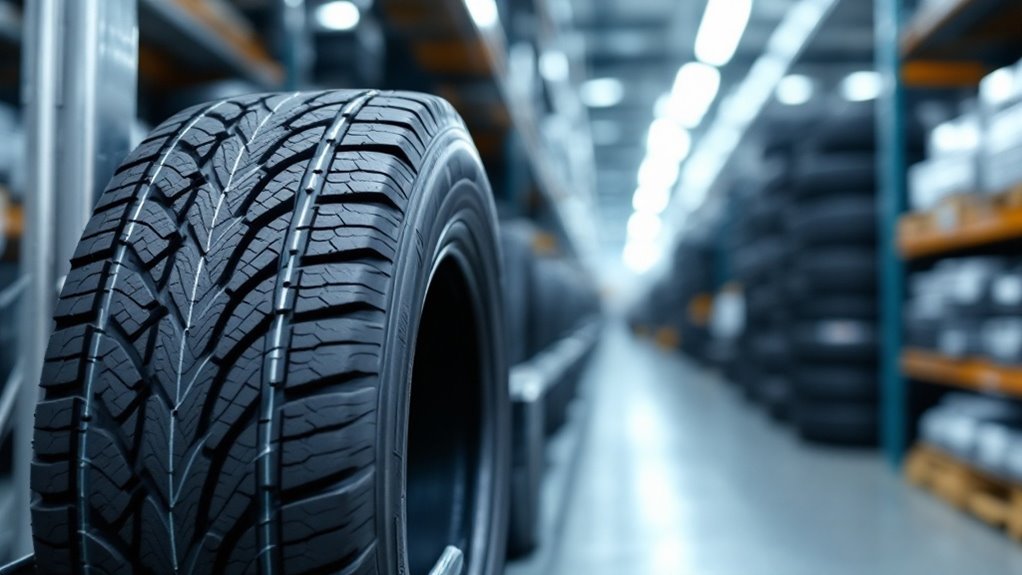Are Retreaded Tires Legal
This post contains affiliate links. As an Amazon Associate, we earn from qualifying purchases.
Retreaded tires are totally legal in the U.S. Federal laws allow them everywhere. Some rules exist for safety, though. Buses can’t use them on front wheels. That’s a strict safety rule. Every retreaded tire needs a Tire Identification Number. This helps track them easily. Strict rules make sure they’re safe to use. Stay with us for more details. Learn about their safety and cool benefits. We’ll also cover industry standards soon.
Essential Facts in 30 Seconds
- Retreaded tires are legal in the U.S. under federal law.
- No state has banned retreaded tires.
- Federal regulations prohibit retreaded tires on the front wheels of buses.
- Retreaded tires must have a Tire Identification Number for tracking purposes.
- States permit retreaded tires if they comply with federal regulations.
Understanding the Legality of Retreaded Tires in the U.S
Folks, let’s dive into the rules about retreaded tires in the U.S. Many hear wrong stories about bans. Truth is, federal laws say retreaded tires are legal everywhere.
All 50 states agree and allow their use too. But, some specific rules exist for safety. It’s critical to understand that no state has imposed a ban on retreaded tires, ensuring their legality nationwide no state bans.
Check the Federal Motor Carrier Safety rules. They ban retreaded tires on bus front wheels. That’s super important for bus drivers to know.
Also, the National Highway Traffic Safety team has a rule. Every retreaded tire must show a Tire Identification Number. This helps track tires for recalls.
Here’s a fast look at the big points:
- Federal rules? No bans at all.
- State rules? All good to use.
- Labeling? Must have TIN.
Know these basics to use tires safely. Stay smart and follow the law!
Safety Standards and Performance of Retreaded Tires

Let’s talk about safety and performance of retreaded tires today. This topic matters a lot for road safety. Retreaded tires can be just as safe as new ones. Studies prove this with clear data. Advanced methods make them strong and reliable.
The process to retread tires follows strict rules. Experts check tire casings many times before reuse. Only good casings get a second chance. Industries like aviation and emergency services trust them. That shows their high quality. The U.S. federal government also confirms that retread tires are as safe as new.
Retreaded tires shine in big uses. Think about trucking and school buses. Even military vehicles rely on them. Safety stays top priority with these steps:
- Thorough checks happen before retreading starts.
- Strict rules keep quality the same always.
- Many important vehicles use these tires daily.
Modern tech helps retreaded tires perform like new. They save money without risking safety. Strong processes guard every step of making them. You can feel safe on the road. Durability and peace of mind come guaranteed.
Regulatory Framework for Retreads in Europe

Dive into the world of tire rules in Europe. Retreaded tires follow strict and clear guidelines. These rules keep everyone safe and protect our planet. Europe uses EC Regulations 108 and 109 for this. UN-ECE standards also play a big role.
Retreads face tough tests, just like new tires. They must have special marks, like the E-Mark, to be legal. Different countries have unique rules, creating some hurdles. Standard marks and same rules help tires cross borders easily. Additionally, these regulations ensure that retreaded tires are as reliable as new ones by enforcing equivalent testing standards.
Check out these key points to know more:
- E-Mark Certification: It shows tires meet EU safety rules. A must for selling!
- Retread Identification Number (RIN): Tells who made it and where. Easy to track!
- Load and Speed Tests: Retreads match new tire standards. Performance stays top-notch!
Understand these tough rules to build trust. Meeting them means reliability in Europe’s tire market. Stick to these standards and face no issues. Retreads are safe and ready for the road!
Environmental and Economic Benefits of Retreading

Retreaded tires bring big benefits for the environment and your wallet. They cut down waste and save resources.
Think about this—retreading a truck tire saves 15 gallons of oil. A new tire needs 22 gallons to make. Retreads also lower carbon emissions by 24%. They keep 1.4 billion pounds of trash out of U.S. landfills every year.
Now, let’s talk money. Retreaded tires cost 30% to 70% less than new ones. This helps fleet owners save a lot.
Check these savings out: less raw material costs, 70% lower energy use, and cheaper maintenance. Why? Retreads last longer than you might expect.
Pick retreads to help the planet. Save cash at the same time. It’s a win-win for everyone!
Debunking Common Myths About Retreaded Tires

Let’s clear up some wrong ideas about retreaded tires. Many think they’re illegal or unsafe. That’s not true at all!
Federal rules, like FMVSS 117, say they’re fine. You can use them on passenger cars and trucks. Just not on bus front wheels.
Certified makers, such as Bandag, ensure top safety. Their tires pass tough tests for strength. They also check endurance with strict standards.
Retreaded tires can be just as good as new ones. Trust the facts, not the myths!
Myth: Retreads Are Illegal
Retreaded tires spark many myths. One big lie? They’re illegal in the U.S. Let’s crush this rumor with hard facts. No state bans retreads. Federal rules, like FMCSA, only limit them on bus front wheels. Simple as that.
So, why does this myth stick around? Let me break it down.
- Rules get twisted. Some think FMCSA bans all retreads. Not true.
- Bad info spreads. Backyard mechanics often share wrong state law ideas.
- No clear facts. Many guess retreads are illegal without checking.
Rest easy. Retreads are legal for most vehicles. Even for commercial use. Trust the data. You’re good to go!
Myth: Retreads Are Unsafe
Retreaded tires often get a bad name for being unsafe. That’s just a myth! Studies by the NHTSA and American Trucking Associations show clear facts. Retreads are as reliable as new tires if cared for well. They save money too—costing less than half of new tires.
Even school buses and ambulances trust them for safety. Isn’t that proof enough?
Care for tires matters a lot, whether new or retreaded. Check inflation and tread wear often. Look at failure reasons: 38% from road hazards, 36% from poor upkeep.
Don’t point fingers at retreads for problems. Keep them maintained, and they work great. Trust retreads to perform safely in all conditions. They bring value every time!
Industry Compliance and Best Practices for Retreads

Retreading tires must follow strict rules for safety and quality. The National Highway Traffic Safety Administration (NHTSA) sets these rules. Your retreaded tires need to pass Federal Motor Vehicle Safety Standards (FMVSS) 117. This standard checks performance, labeling, and certification. It’s a must for fleet managers or retreading businesses.
Stick to these best practices for safe and quality retreads. First, inspect tires every week. Look for wear or damage, especially on heavy-load vehicles.
Next, pick the right tires for your vehicle. Match retreads to the vehicle type and job. Wrong matches can risk safety.
Lastly, train your team well. Teach them to spot problems like low tread depth. Regular checks save lives!
Did you know? Over 80% of tire failures come from poor maintenance. Act now. Keep your tires safe and strong!
Frequently Asked Questions
How Are Retreaded Tires Made?
Curious about retreaded tires? Let’s dive into the cool process! First, experts check old tire casings closely. They look for damage or weak spots. Next, they buff the surface smooth. This removes old, worn-out tread. Then, they fix any holes or flaws. After that, new rubber gets added on top. They press it tight for a strong bond. Finally, heat seals everything into a fresh tread. Did you know? Retreaded tires save about 15 gallons of oil per tire! This method keeps roads safe and cuts waste too. Stick around to learn more fun facts!
What Vehicles Commonly Use Retreads?
Retreads show up on tons of vehicles. Think about school buses rolling around. Ambulances use them too for quick response. Commercial trucks carry heavy stuff with retreads. They save money every day. Performance stays strong with these tires. Many fleets trust them a lot. Data says retreads cut costs by 30-50%. That’s a big deal for businesses. Stick with retreads for smart savings.
How Long Do Retreaded Tires Last?
Got questions about retreaded tires? Curious about their lasting power? They often match new tires in lifespan. Expect 3 to 6 years with good care. Retread strength stands out. Some last through multiple cycles. Data shows durability with proper upkeep. Keep them checked and safe. That’s the key to long use!
Can Retreaded Tires Be Repaired?
Ever wondered about fixing retreaded tires? Good news—over 80% of them can get repaired! Damage doesn’t mean the end. Stick to strict rules for safety. Use only approved materials for repairs. This keeps tires strong and lasting. Proper care boosts performance every time. Trust the data; it’s proven! Keep things simple and safe. Follow guidelines for best results.
Where Can I Buy Retreaded Tires?
Want to find retreaded tires? Check Bandag dealers for quality options. Maryland Truck Tire Services also sells them. Need an easy way? Browse TreadWright online for awesome prices. Utires.com offers sweet deals too. Save money with retreaded tires today! Over 50% of truckers use them. They last long and cost less. Grab yours now!
Conclusion
Retreaded tires are completely legal and a fantastic choice. They save money and help the planet. Many studies show retreads are safe for most vehicles. Think about this—why waste resources on new tires? Retreads cut down on rubber waste every year. They cost less, often half the price of new ones. Still, they meet strict safety rules and standards. Trust the facts, not old myths or rumors. Pick retreads and drive with confidence today. You’re joining an eco-friendly path for a better tomorrow.
